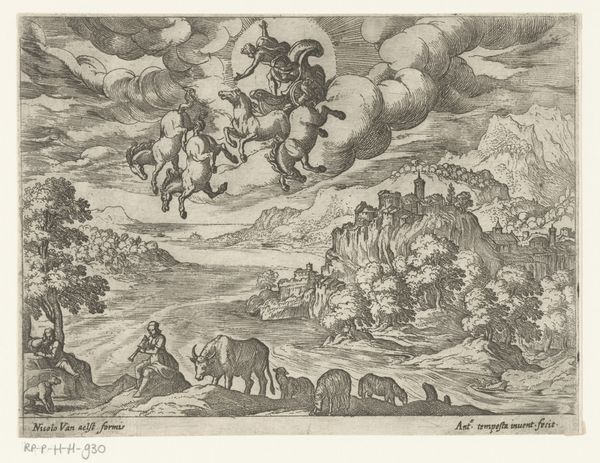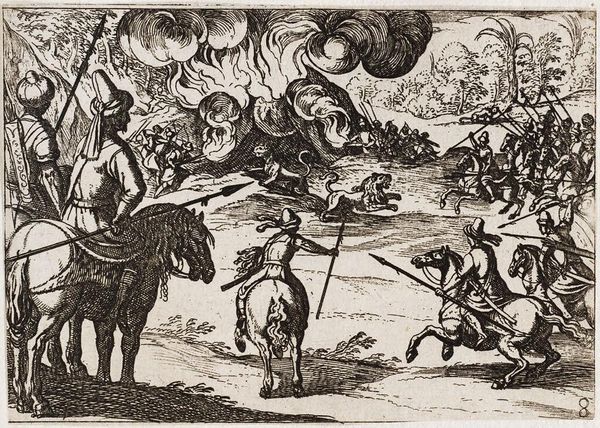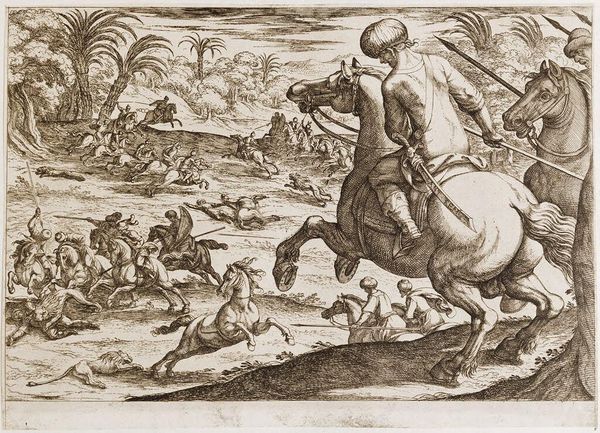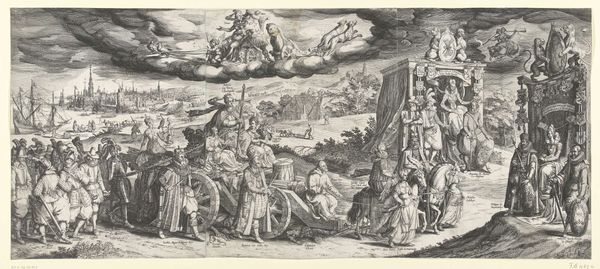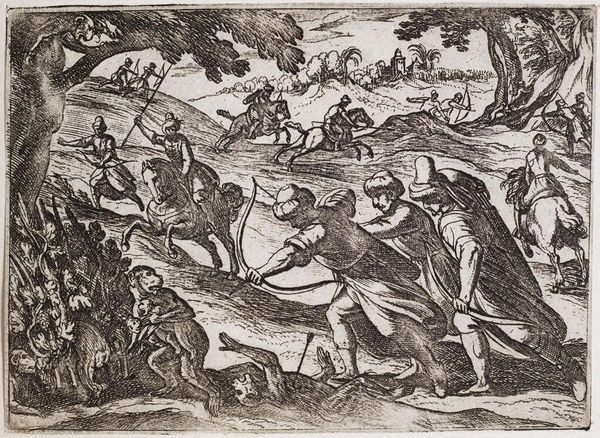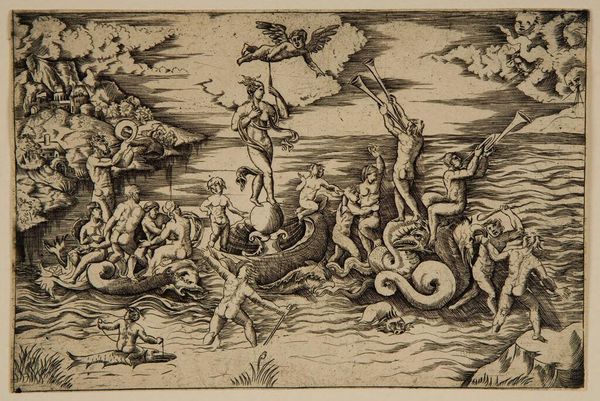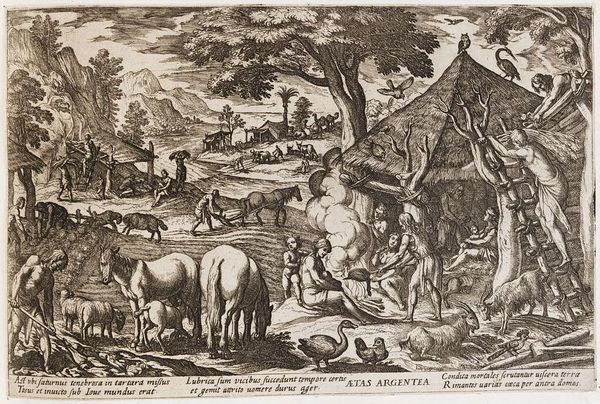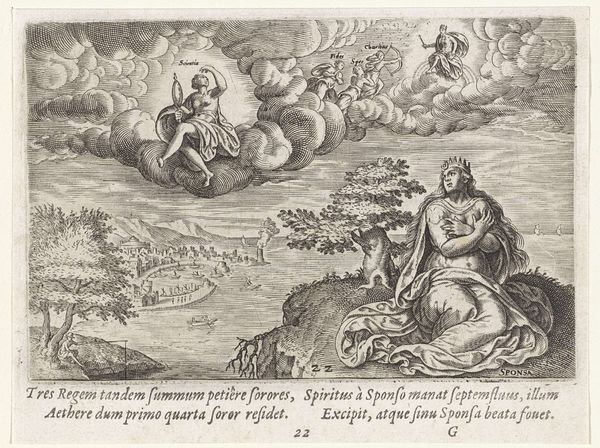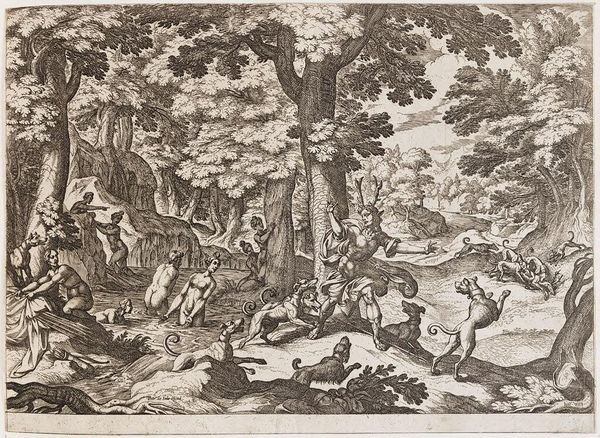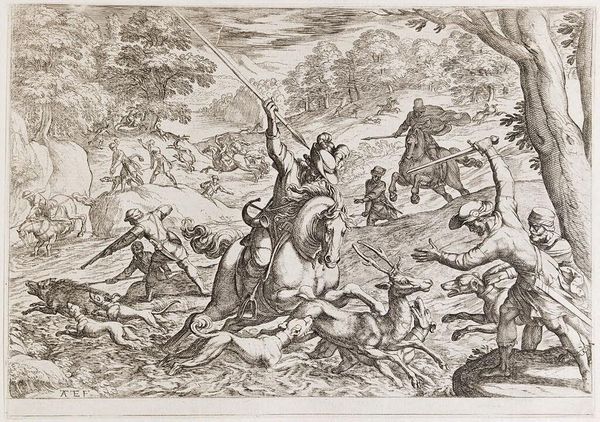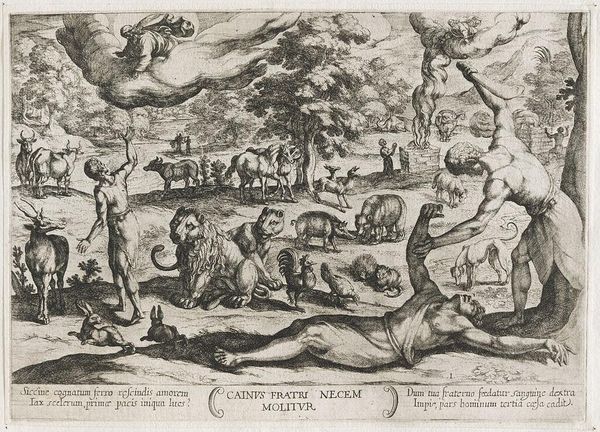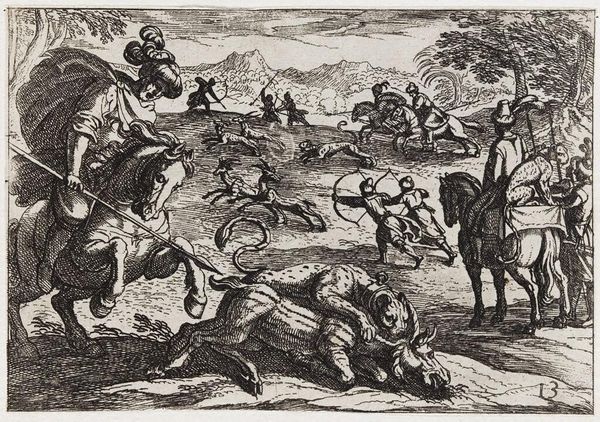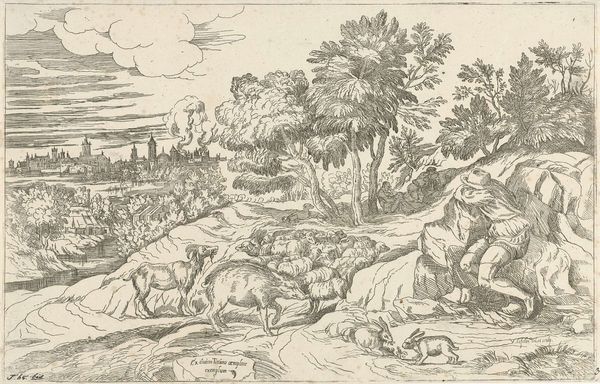
Copyright: CC0 1.0
Editor: So, this is Antonio Tempesta's "The Fall of Phaeton," an engraving from around the late 16th or early 17th century. It's striking how such a chaotic scene is rendered with such detail. What symbols do you see at play here? Curator: The most potent symbol is Phaeton himself, plummeting from the sun chariot. It represents hubris, the danger of unchecked ambition. Remember, the sun chariot is a powerful emblem of divinity, order, and control. Its disruption signifies not just personal failure, but cosmic imbalance. Editor: So, the image carries a warning? Curator: Indeed. The story of Phaeton resonated deeply in the Renaissance. His fall becomes a potent symbol of human limitations when compared with divine power and purpose. This is a morality tale. Editor: I never thought of art as a warning. I thought of it as beautiful, but I see the message now.
Comments
No comments
Be the first to comment and join the conversation on the ultimate creative platform.
